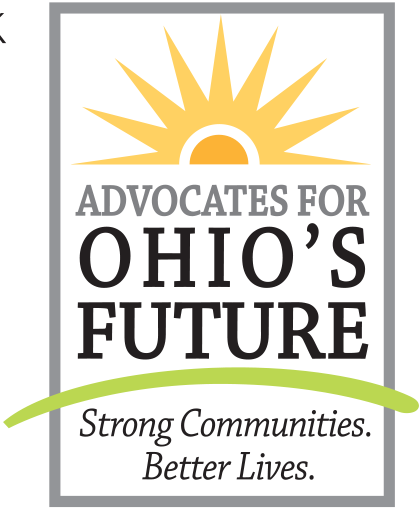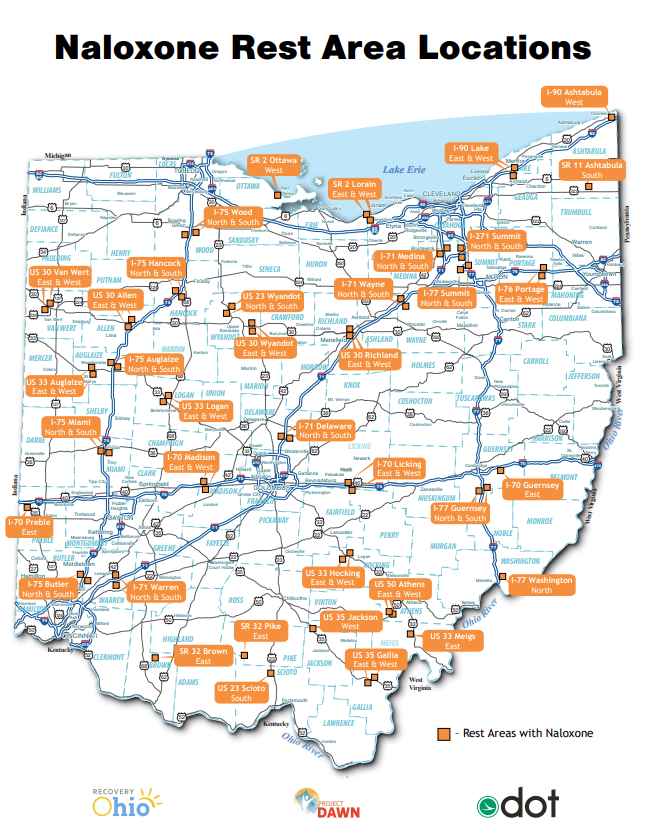by: Andy Jesson, AOF Policy & Communications Intern
Despite downward trends over the last decade in opioids prescribed statewide, the opioid epidemic continues to plague Ohio at a disproportionate rate compared to the rest of the country. Ohio’s most recent publicly-available data shows the opioid crisis having a continued impact, with 4313 Ohioans dying as a result of an opioid overdose in 2021. Statistics published by the Centers for Disease Control and Prevention rank Ohio 5th nationally in aggregate overdose deaths and 7th in overdose death rate.
Amidst various strategies combatting the drug epidemic rests the use of harm reduction initiatives. Harm reduction is defined by the Substance Abuse and Mental Health Services Administration (SAMHSA) as an evidence-based approach that is critical to engaging with people who use drugs, equipping them with life-saving tools and information. Often partnered with prevention, treatment, and/or recovery, harm reduction specifically focuses on diminishing the health risks associated with drug use such as unsterile needles, laced substances and fatal overdoses.
On October 11, 2023, Governor Mike DeWine announced a $100 million investment of federal funds in programs aimed at mitigating opioid addiction and overdose deaths throughout the state. The funding, received from SAMHSA, is intended to strengthen existing programs in harm reduction, prevention, treatment, and recovery. At the core of this investment and past initiatives by the DeWine Administration is increasing access to the opioid antagonist naloxone for individuals who use drugs.
Naloxone, commonly referred to by its brand name Narcan, is a nasal spray used to reverse the effects of an opioid overdose. An opioid antagonist, naloxone binds to opioid receptors in the brain and reverses/blocks the effects of other opioids present in the bloodstream. Naloxone has no effect (positive or negative) on someone not experiencing an opioid overdose.
In 2012, the Ohio Department of Health coordinated the first Project DAWN (Deaths Avoided With Naloxone) site in Portsmouth, one of the epicenters of Ohio’s opioid crisis. Project DAWN is a state initiative increasing access to naloxone through the creation of distribution sites, serving as an important harm reduction strategy for opioid addiction. Since 2012, Project DAWN expanded to now cover 82 of Ohio’s 88 counties through 182 registered programs. Evidence supports the work of Project DAWN and its continued expansion throughout the state. Between 2014 and 2022, distribution of naloxone increased from less than 3,000 to over 205,000 kits per year, and the number of known overdose reversals in Ohio increased from 190 to more than 18,000 per year.
Governor DeWine announced further expansion of naloxone kits in September 2023 through partnerships with RecoveryOhio, the Ohio Department of Transportation, and Project DAWN. This latest initiative provides naloxone kits at designated rest areas along Ohio’s highways, further increasing access to the life-saving drug. This year, Governor DeWine announced an additional collaboration set to offer free naloxone kits to public and independent colleges and universities across the state. Naloxone kits are also available online and as an over-the-counter medication in pharmacies across the state.
Recent establishment of the OneOhio Recovery Foundation in 2021 presents another opportunity for Ohio to further distribution of naloxone and other harm reduction resources. The nonprofit foundation was created by government leaders in Ohio to distribute 55 percent of the funds Ohio will receive amid lawsuits with pharmaceutical companies. Coupled with current initiatives, promotion of OneOhio Recovery Foundation can further mitigate risks associated with drug use.
In addition to naloxone, the state also offers fentanyl testing strips (FTS) to Ohio distributors of dangerous drugs (pharmacies, hospitals, etc.). Fentanyl testing strips are small strips of paper that indicate the presence of fentanyl in other drugs including cocaine and heroin. Use of FTS reduces the risk of a fatal drug overdose by warning the user if a substance contains fentanyl. Legislation making FTS legal in Ohio went into effect in April 2023, with the focus in recent months centered on making FTS more accessible for individuals who use drugs.
FTS provide an important mechanism for individuals to avoid consumption of highly lethal fentanyl, an otherwise odorless, tasteless, and undetectable drug. Over the last decade, fentanyl has become increasingly prevalent within the illicit drug market, largely responsible for the upward trend in overdose deaths. In 2016, 58 percent of all Ohio drug overdose deaths involved fentanyl. By 2022, the number had risen to 81 percent, along with the overall increase in overdose deaths. Fentanyl presents a unique challenge in efforts to reverse trends within the opioid epidemic because of its lethality. FTS offer one method for reducing Ohioans’ consumption of fentanyl, and in turn, the number of lives lost to drug overdoses.
Harm reduction is not a standalone strategy deployed to reduce the number of people who use drugs but rather an effective tool for individuals facing addiction. State-supported harm reduction initiatives reduce the risk of death or disease stemming from drug use. As opioid addiction continues its assault against Ohio families, expansion of programs distributing naloxone and fentanyl testing strips will reduce the number of Ohioans tragically lost to the drug crisis each year.



